Just as your financial situation becomes burdensome with multiple debts, a personal loan to consolidate debt can be an effective solution. By combining your liabilities into a single loan with a potentially lower interest rate, you can simplify your monthly payments and improve your credit score over time. However, it’s important to evaluate the terms carefully, as failing to manage this new debt responsibly can lead to additional financial strain. Explore potential risks and benefits, and discover how to leverage personal loans to regain control of your finances.
—
### Summary
Using personal loans to consolidate debt can streamline payments and possibly reduce interest rates, enhancing your financial stability when used wisely.
### Table of Contents
1. Understanding Debt Consolidation
2. How Personal Loans Work
3. Benefits of Using Personal Loans for Debt Consolidation
4. Risks Involved
5. Steps to Obtain a Personal Loan for Consolidation
6. FAQs
### Understanding Debt Consolidation
Debt consolidation involves combining various debts into a single payment or loan. It can reduce multiple monthly payments to one, making it easier for you to manage your finances. This option is ideal if you’re coping with high-interest debts like credit card balances.
### How Personal Loans Work
A personal loan is typically unsecured, meaning you don’t need to offer collateral. These loans can be utilized for various purposes, including debt consolidation, by offering a sum of money that you pay back in installments over a set period. Ensure to check the interest rates and terms provided by lenders.
### Benefits of Using Personal Loans for Debt Consolidation
Using a personal loan for debt consolidation comes with several benefits:
– Simplified Payments: You’ll deal with only one creditor instead of multiple ones.
– Lower Interest Rates: If you qualify for a lower rate than your current debts, you can save money on interest.
– Credit Score Improvement: A personal loan may help improve your credit utilization ratio, positively impacting your credit score over time.
### Risks Involved
Despite the advantages, risks exist:
– Further Debt Accumulation: If you’re not careful, you might end up accruing more debt after consolidating.
– Higher Overall Costs: If the interest rate on your new loan is higher, or if you take longer to pay it off, you may wind up with more costs than if you had kept your existing debts.
### Steps to Obtain a Personal Loan for Consolidation
1. Check Your Credit Score: A good score can provide favorable loan terms.
2. Research Lenders: Compare interest rates and terms to find the best fit for your needs.
3. Apply for the Loan: Gather your financial documents and submit your application.
4. Use the Funds Wisely: Pay off existing debts immediately to prevent further accumulation.
### FAQs
– How much can I borrow with a personal loan for debt consolidation?
Most lenders offer personal loans ranging from $1,000 to $100,000, depending on your creditworthiness.
– Will this affect my credit score?
Initially, applying for a loan may cause a temporary dip in your score due to a hard inquiry, but successfully managing the new loan can positively impact your score long-term.
– How long will it take to get approved?
Approval can happen within hours to days, depending on the lender and your financial background.
### Conclusion
Utilizing a personal loan to consolidate your debt can simplify your financial commitments and potentially lower your interest payments, fostering a path toward better financial management. However, weigh the pros and cons carefully and ensure that you manage your expenditures wisely to truly benefit from this financial strategy.
The Financial Anatomy of Debt Consolidation
Debt consolidation involves pooling multiple debts into a single loan to simplify payments and potentially lower interest rates. This financial strategy can alleviate the stress of juggling several monthly bills while offering a clear pathway to financial freedom. By carefully evaluating your debts, you can make informed decisions on the best debt consolidation method, ensuring that you address the core issues that led to the debt in the first place.
Unpacking Personal Loans: How They Function
Personal loans serve as a versatile financial tool, allowing you to borrow a specific amount of money over a predetermined repayment period, typically with fixed monthly installments. When you take out a personal loan for debt consolidation, you use the funds to pay off existing debts, uniting them under one lender. This approach not only simplifies your payments but can also save you money over time if you secure a lower interest rate compared to your previous debts.
The Role of Interest Rates in Debt Consolidation
Interest rates play a pivotal role in determining whether debt consolidation is beneficial for you. Securing a personal loan with a lower interest rate than your existing debts can mean substantial savings in the long run. For instance, if the average interest rate on your credit card debt is 18% and you obtain a personal loan at 10%, you’re effectively reducing the cost of borrowing. This reduction can impact your monthly payment amounts and the total interest paid over the life of the loan.
Lower interest rates significantly influence how much you end up paying, allowing you to allocate a larger portion of your payment towards the principal balance, thus speeding up your debt repayment process. If you start with a $15,000 balance on a credit card at 18% and switch to a personal loan at 10%, you could save thousands in interest fees and pay off debt faster. It’s important to shop around for the best rates and terms to ensure maximum benefit from your debt consolidation efforts.
Decoding the Benefits of Personal Loans for Debt Relief
Personal loans serve as a powerful tool for debt relief, offering you the means to tackle high-interest debts effectively. By consolidating your debts into a single loan with a potentially lower interest rate, you can reduce financial strain and steer towards a more manageable future. With fixed repayment terms, personal loans provide clarity in your financial landscape, allowing you to plan your budget more effectively while working towards a debt-free life.
Streamlining Payments: Simplifying Your Finances
Consolidating multiple debts into a single personal loan simplifies your finances significantly. Instead of juggling various due dates and payment amounts, you can focus on just one monthly payment, which can enhance your budgeting accuracy. A streamlined process not only saves you time but reduces the chances of missed payments, consequently lowering your stress levels and keeping you on track for repayments.
The Potential for Improved Credit Scores
Leveraging a personal loan to consolidate debts can lead to an improved credit score over time. By reducing the number of accounts with outstanding balances, you enhance your credit utilization ratio, which is a significant factor in credit scoring models. Consistent, on-time payments for your new consolidated loan also reflect positively on your credit history, signaling responsibility to credit bureaus.
Improving your credit score through debt consolidation is not just about reducing your debt load; it’s also about how you manage the new loan. For instance, if you pay down your consolidated loan while keeping your previous accounts open and in good standing, these actions contribute positively. Data from credit bureaus show that individuals who effectively manage their debt consolidation see an average score increase of 40 to 50 points within the first year. This new, healthier score can open doors to better interest rates for future loans and credit applications, paving the way for more favorable financing opportunities.
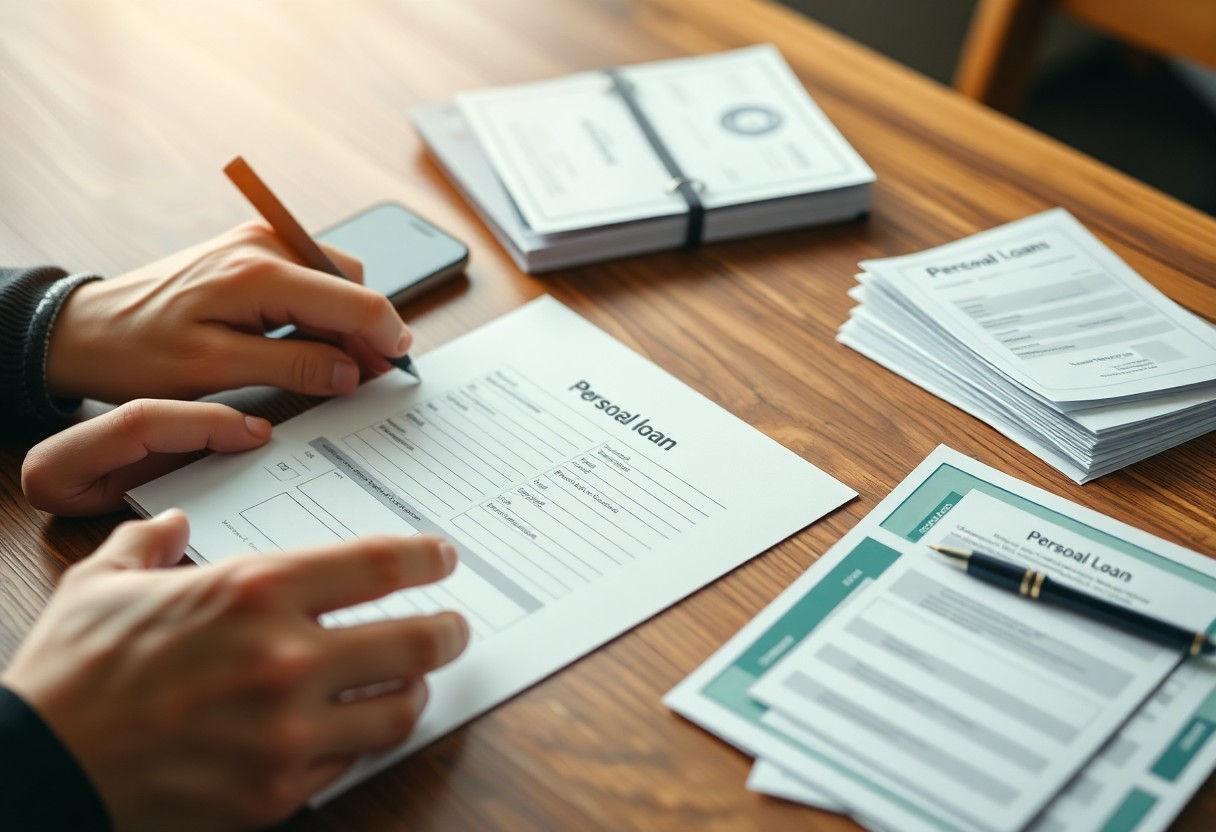
Navigating the Application Process with Confidence
With the right preparation, you can maneuver through the personal loan application process smoothly. Knowing what to expect and having your documents in order not only boosts your chances of approval but also helps you secure the best rates available. A proactive mindset and thorough research will equip you with the knowledge needed to tackle this financial challenge head-on.
Essential Documentation for Securing a Personal Loan
Gathering the appropriate documentation is vital when applying for a personal loan. You’ll typically need to provide personal identification like a driver’s license or passport, proof of income such as pay stubs or tax returns, and details about your existing debts. Having these documents ready not only speeds up the application process but also strengthens your case for approval.
Understanding Approval Criteria and Credit Checks
Approval for a personal loan largely hinges on your creditworthiness and financial standing. Lenders will assess your credit score, typically looking for scores above 650, although some may cater to lower scores. They’ll also review your debt-to-income ratio, which ideally should be below 40%. By understanding these factors, you can focus on improving your financial profile prior to applying, enhancing your chances of a favorable outcome.
Lenders use credit checks as a tool to gauge your reliability in repaying borrowed funds. A credit report displays your payment history, outstanding debts, and overall credit utilization. A solid score can secure better interest rates, whereas a lower score may lead to higher rates or even denial. If your credit score is less than stellar, consider pulling your credit report to identify areas for improvement prior to applying. Notably, understanding your credit landscape empowers you to either work towards enhancing it or to shop around multiple lenders for better outcomes.

Pitfalls to Avoid When Choosing Personal Loans for Debt Consolidation
Understanding the potential pitfalls when selecting a personal loan for debt consolidation can safeguard your financial future. You need to steer clear of loans that can lead to deeper financial troubles, ensuring that the path to a debt-free life isn’t laden with unexpected dangers. The right loan can simplify your payments and reduce your interest rates, but the wrong one may do quite the opposite.
The Pitfalls of High-Interest Loans
Beware of high-interest loans that may seem appealing initially but can quickly escalate your total debt. These loans can have APRs higher than 20%, significantly diminishing any savings from consolidating your debts. It’s easy to underestimate the long-term costs; for example, borrowing $10,000 at 25% interest for five years could lead to paying over $5,000 just in interest. Opt for loans with lower rates to avoid this financial trap.
Recognizing Hidden Fees and Terms
Hidden fees and confusing terms can lurk in the fine print of personal loan agreements, creating unwelcome surprises. You might encounter origination fees, prepayment penalties, or late fees that can increase your overall borrowing cost significantly. For instance, an origination fee of 3% on a $10,000 loan means you’ll owe $300 before you even make a payment. Always read the loan agreement thoroughly to uncover potential pitfalls.
Take the time to meticulously analyze all loan documents and compare offers from multiple lenders. Pay attention to the Total Annual Percentage Rate (APR), which includes both interest and fees. Often, lenders advertise low-interest rates but add hefty fees that could turn your seemingly low-cost loan into an expensive burden. Look for transparency in the terms, so you’re not caught off guard by costs that could counteract the savings from consolidating your debts.
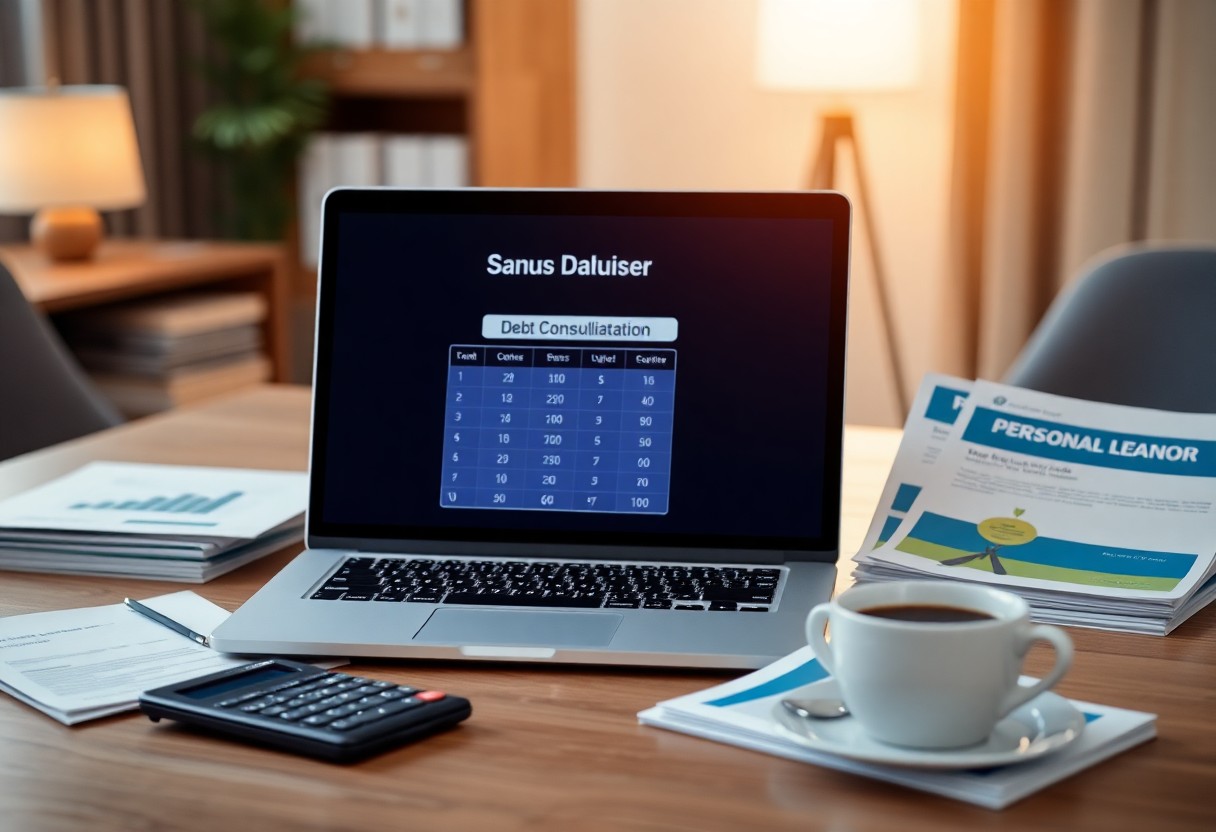
Strategic Repayment Plans: Maximizing Your Financial Health
Crafting strategic repayment plans enables you to tackle your debts methodically while prioritizing your financial well-being. Consider the snowball method, where you pay off your smallest debts first for a psychological boost, or the avalanche method, which focuses on clearing the highest-interest debts to save on interest payments over time. A proactive approach to budgeting that includes these strategies can lead to significant long-term improvements in your financial health, as you systematically reduce your debt burden while maintaining a sustainable repayment pace.
Balancing Loan Payments with Lifestyle Goals
Finding a harmonious balance between your loan payments and lifestyle goals is key to maintaining your overall financial stability. As you budget for your personal loan repayments, assess your monthly financial obligations against your living expenses and discretionary spending. Aim to allocate funds that allow you to enjoy life, pursue hobbies, and invest in your future while ensuring your debt obligations are met promptly.
Exploring Additional Strategies for Long-Term Success
Beyond basic repayment strategies, enhancing your financial trajectory involves integrating additional techniques into your financial plan. Consider strategies like increasing your income through side jobs or negotiating better payment terms with creditors. Building an emergency fund can also serve as a buffer against unexpected expenses, preventing you from relying on credit cards again. Regularly reviewing your budget allows for timely adjustments, ensuring you stay on track as your circumstances change.
Implementing these additional strategies can create a comprehensive roadmap to sustained financial health. You might find that enrolling in financial literacy courses strengthens your understanding of personal finance, guiding you to make informed decisions. Setting specific, measurable goals can keep you motivated and accountable. Don’t hesitate to explore community resources or online platforms that provide tools and support for debt management. As you integrate these methods, you’re arming yourself with the knowledge and techniques necessary for long-term financial stability, setting you on a path towards a debt-free future.
Conclusion
Now that you understand how personal loans can be a strategic tool for consolidating debt, you can take actionable steps towards improving your financial health. By merging high-interest debts into a single, manageable payment with potentially lower interest rates, you can simplify your financial obligations. Assess your needs, explore various lenders, and choose a loan that empowers you to regain control over your finances. Ultimately, making informed choices will lead you to a more stable and manageable debt situation, allowing you to focus on your future goals.
FAQ on Personal Loans to Consolidate Debt
Q: What exactly is a personal loan for debt consolidation?
A: A personal loan for debt consolidation is a type of unsecured loan used specifically to pay off multiple debts, such as credit cards, medical bills, or other loans. By consolidating these debts into one personal loan, borrowers can benefit from a lower interest rate, a fixed repayment schedule, and simplified monthly payments, making it easier to manage their overall financial situation.
Q: How can I determine if a personal loan for debt consolidation is right for me?
A: To assess whether a personal loan for debt consolidation suits your needs, evaluate your current debts, interest rates, and monthly payments. Consider factors such as your credit score, income, and total debt amount. If the personal loan offers a lower interest rate than your existing debts, and the monthly payments are manageable within your budget, it might be a beneficial option for you. Additionally, research different lenders to find competitive rates and terms that fit your financial plan.
Q: What are the typical interest rates for personal loans used for debt consolidation?
A: Interest rates for personal loans used for debt consolidation vary widely, typically ranging from 5% to 36%. Rates depend on individual factors such as credit score, income, loan amount, and repayment terms. Generally, borrowers with higher credit scores secure lower interest rates. Ensure to shop around and compare offers from different lenders to obtain the best possible rate for your situation, and consider whether the loan terms align with your long-term financial goals.
Q: What are the benefits and potential drawbacks of using a personal loan to consolidate debt?
A: The benefits of using a personal loan for debt consolidation include streamlined payments, potentially lower interest rates, and a fixed repayment period. However, drawbacks can include fees associated with taking out a loan, the risk of accruing new debt if spending habits don’t change, or potential impacts on your credit score if you apply for multiple loans. It’s crucial to weigh these pros and cons and ensure a personal loan aligns with your overall financial strategy.
Q: Is it possible to consolidate debt without a personal loan?
A: Yes, it is possible to consolidate debt without a personal loan. Alternatives include balance transfer credit cards, which typically offer a low or 0% introductory interest rate for a specified period; debt management plans through credit counseling services, or negotiating directly with creditors for lower repayment terms. Each method has its pros and cons, so it’s beneficial to evaluate which option best fits your financial situation and goals.
Summary
Personal loans for debt consolidation can be a viable solution for individuals looking to simplify their finances and reduce the burden of high-interest debts. Understanding the nature of these loans, evaluating your situation, and exploring alternatives are key steps in determining if this financial strategy fits your needs. Always ensure to conduct thorough research and consult with financial advisors where possible to make informed decisions.

Emily K. Lawson is a certified credit advisor and personal finance writer with over 10 years of experience in the short-term lending industry. She is passionate about helping Americans navigate financial emergencies with practical advice and clear explanations. Based in New Orleans, Louisiana, Emily combines her industry insights with a people-first approach to educate readers on responsible borrowing, credit management, and financial wellness. At QuickLoanPro.com, she shares up-to-date content designed to empower smart money choices and reduce debt stress.
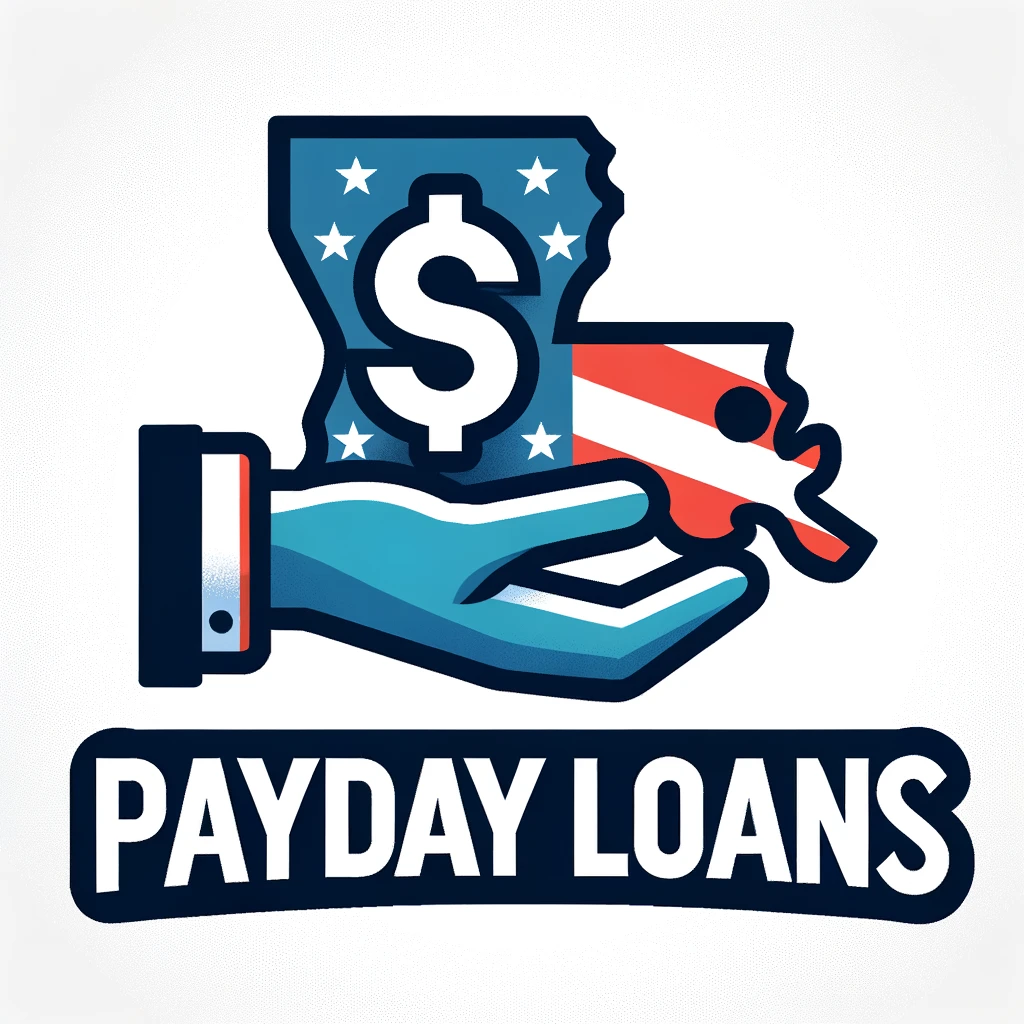
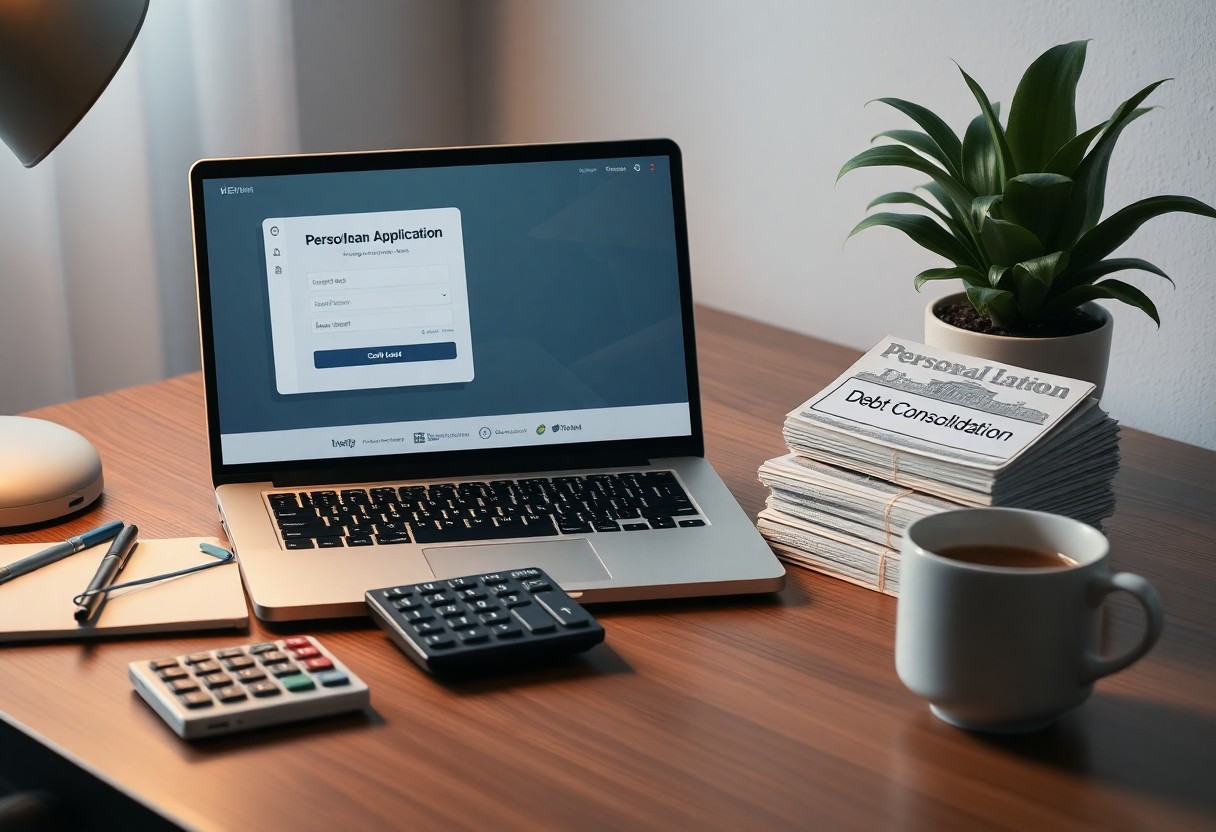

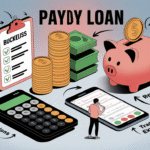

The conversation around debt consolidation is particularly relevant today, especially as many people are navigating the complexities of managing multiple debts. Your insights about the potential of personal loans for consolidating debt resonate with my own experiences. I’ve found that taking the plunge into a personal loan for consolidation can indeed create a sense of relief, both psychologically and financially.
It’s interesting to see how personal loans can play such a crucial role in managing debt, especially in a world where financial pressures can sometimes feel overwhelming. I can relate to the struggle of juggling multiple debts, and I remember when I took the plunge to consolidate my own student loans and credit card debt. The simplification of having just one monthly payment was a relief, and the lower interest rates definitely helped me save on overall costs.
It’s great to hear how consolidating your student loans and credit card debt has made such a positive impact on your financial situation. That relief of managing just one monthly payment can really change the whole experience of dealing with debt. I think a lot of people underestimate how much stress multiple payments can create, especially when life gets busy.
Ah, the thrill of debt consolidation! It’s like trying to tame a wild herd of credit cards, but instead you just end up with one stubborn mule of a personal loan. I think the key here is akin to cleaning out your fridge – you’ve got to sort through the old leftovers (debts) before getting that fresh batch of groceries (the new loan).